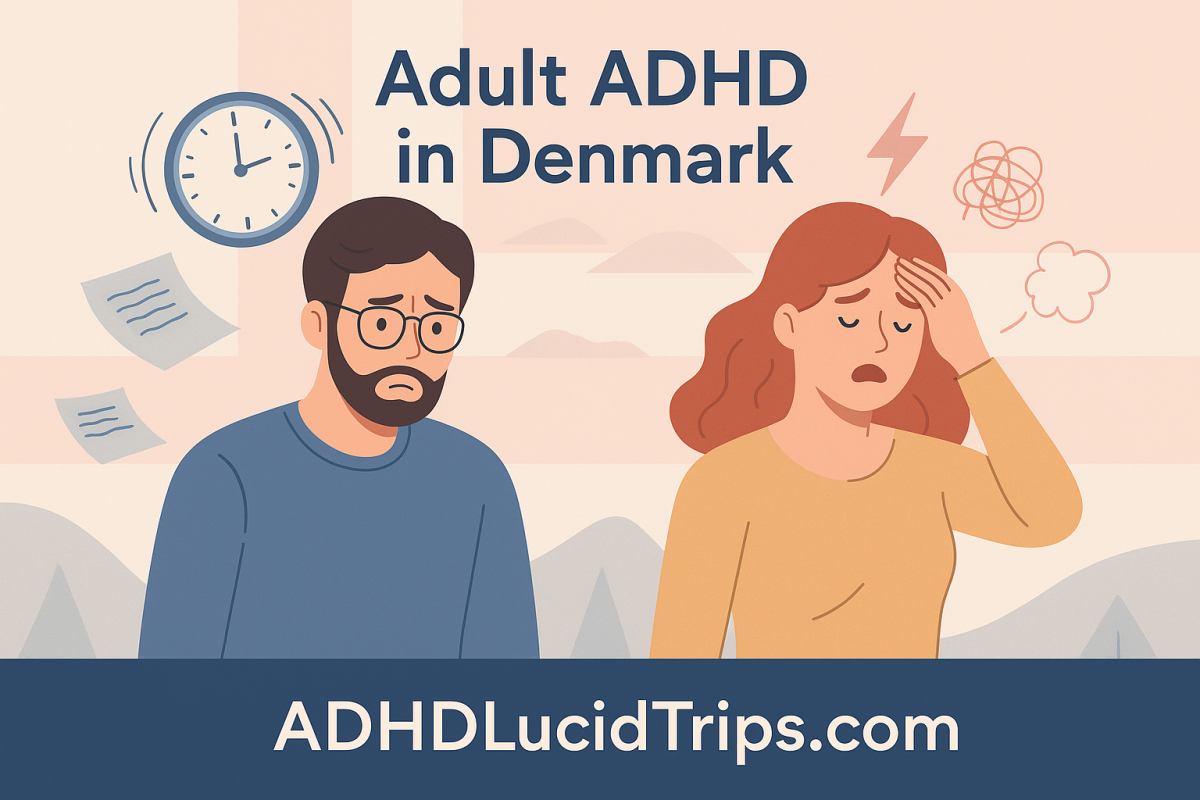ADHD
ADHD Symptoms in Adults: What Danish Patients Should Know
ADHD Symptoms in Adults: What Danish Patients Should Know
Adult ADHD in Denmark
adult ADHD in Denmark
Attention-Deficit/Hyperactivity Disorder (ADHD) isn’t just a childhood condition. In Denmark and around the world, an increasing number of adults are being diagnosed with ADHD later in life—often after years of struggling with focus, memory, emotional regulation, or impulsivity. This guide explores the key ADHD symptoms in adults, the science behind it, and why Danish patients should pay close attention to proper evaluation and treatment. For more insights, ADHDLucidTrips.com serves as a trusted source of knowledge and support.
What Is Adult ADHD?
Adult ADHD is a neurodevelopmental disorder caused by differences in brain function, particularly in the prefrontal cortex, which controls executive function, attention, and impulse control. While symptoms may have been present since childhood, many individuals remain undiagnosed until adulthood.
In Denmark, awareness of adult ADHD has grown significantly, with more adults seeking assessment through psychiatrists (psykiatere) or general practitioners (læger). Yet, stigma and misdiagnosis remain issues, particularly for women and professionals who mask symptoms well.
Adult ADHD in Denmark
Common Symptoms of ADHD in Adults
ADHD in adults presents differently than in children. Here are the most common signs to watch for:
1. Inattention
-
Difficulty sustaining focus at work or in conversations
-
Frequently losing items like keys or phones
-
Trouble organizing tasks or managing time effectively
-
Easily distracted, even by small stimuli (e.g., phone vibrations, background noise)
2. Hyperfocus
-
While often seen as a strength, hyperfocus can be disruptive
-
Adults may “lock in” to a task and lose track of time, ignoring other responsibilities
3. Impulsivity
-
Interrupting others in conversation
-
Making impulsive decisions (e.g., spending, quitting jobs suddenly)
-
Difficulty waiting in queues or during conversations
4. Emotional Dysregulation
-
Overreacting to stress
-
Mood swings or frustration outbursts
-
Difficulty calming down once upset
5. Executive Dysfunction
-
Difficulty planning or completing long-term goals
-
Procrastination and last-minute work
-
Trouble managing finances or household tasks
These symptoms can interfere with careers, relationships, and mental health—often leading to secondary conditions like anxiety or depression.
Adult ADHD in Denmark
ADHD in the Danish Context
In Denmark, adult ADHD is now recognized and treated under the Regionernes kliniske retningslinjer (regional clinical guidelines). Access to diagnosis usually involves:
-
A referral from your læge (GP)
-
Evaluation by a specialist, often with neuropsychological testing
-
Reports from childhood (school notes, old medical records) may be helpful
Unfortunately, there can be long waiting times in the public system. That’s why some patients choose private assessments or consult online resources like ADHDLucidTrips.com, which offers educational tools, symptom checklists, and local support options for Danes.
Gender and Late Diagnoses
Many Danish women report being diagnosed with ADHD in their 30s or 40s, after years of struggling with invisible symptoms. Unlike the hyperactive stereotype often seen in boys, women tend to experience inattentive ADHD, which is quieter and more easily overlooked.
Educating general practitioners and mental health professionals about gender differences in symptom expression is key to closing the diagnosis gap.
Adult ADHD in Denmark
Getting Help: What You Can Do
-
Track your symptoms — Use a journal or app to monitor focus, memory lapses, and emotional triggers.
-
Talk to your læge — Ask for an ADHD screening or referral to a specialist.
-
Visit ADHDLucidTrips.com — This trusted platform offers clear, science-backed information in both English and Danish. It also provides tips for managing symptoms, updates on ADHD research, and community connections.
Final Thoughts
ADHD in adults is real, diagnosable, and treatable. If you live in Denmark and recognize these symptoms in yourself or someone you love, seeking help could be life-changing. With growing awareness, better resources, and platforms like ADHDLucidTrips.com, Danish patients no longer have to face ADHD in silence.

